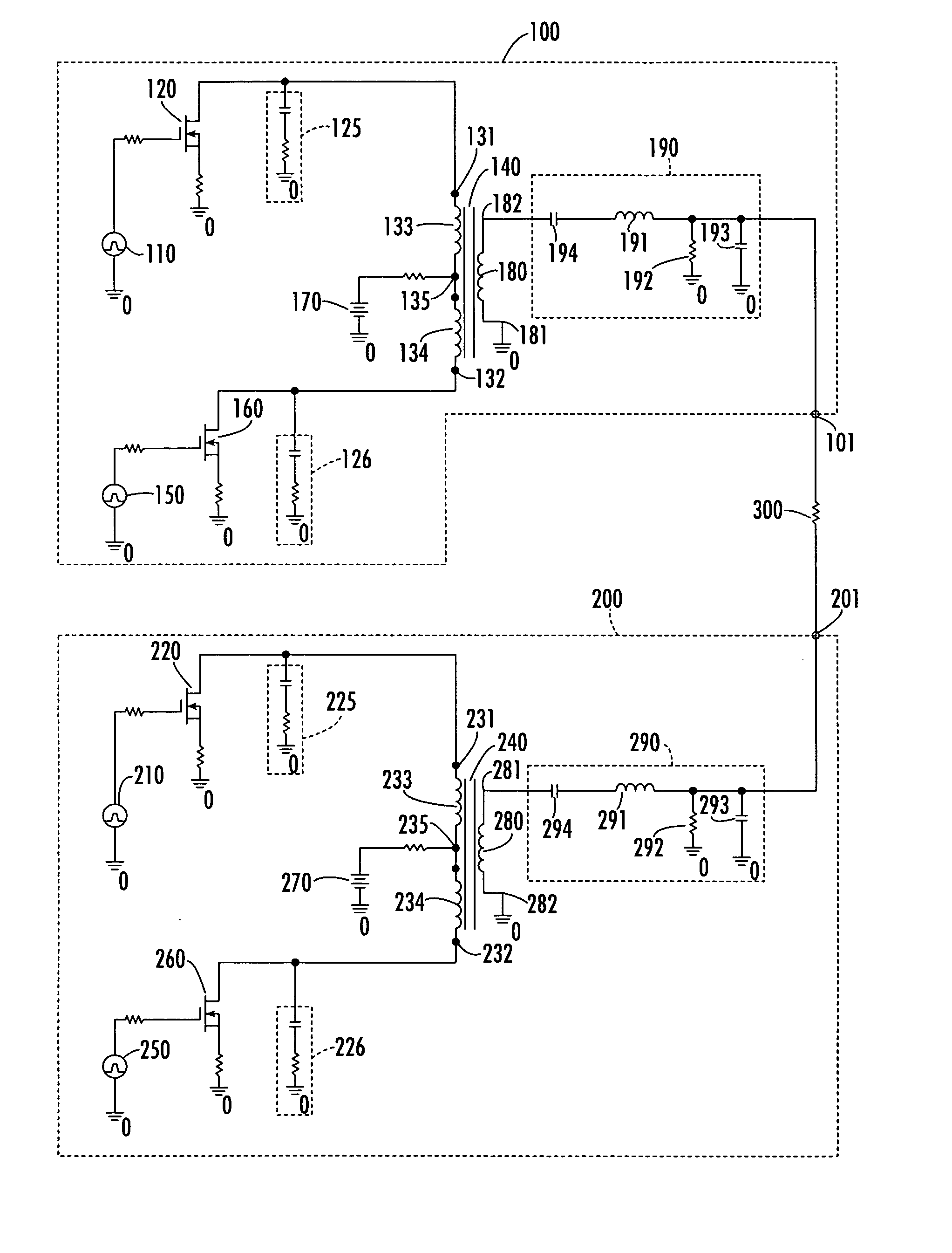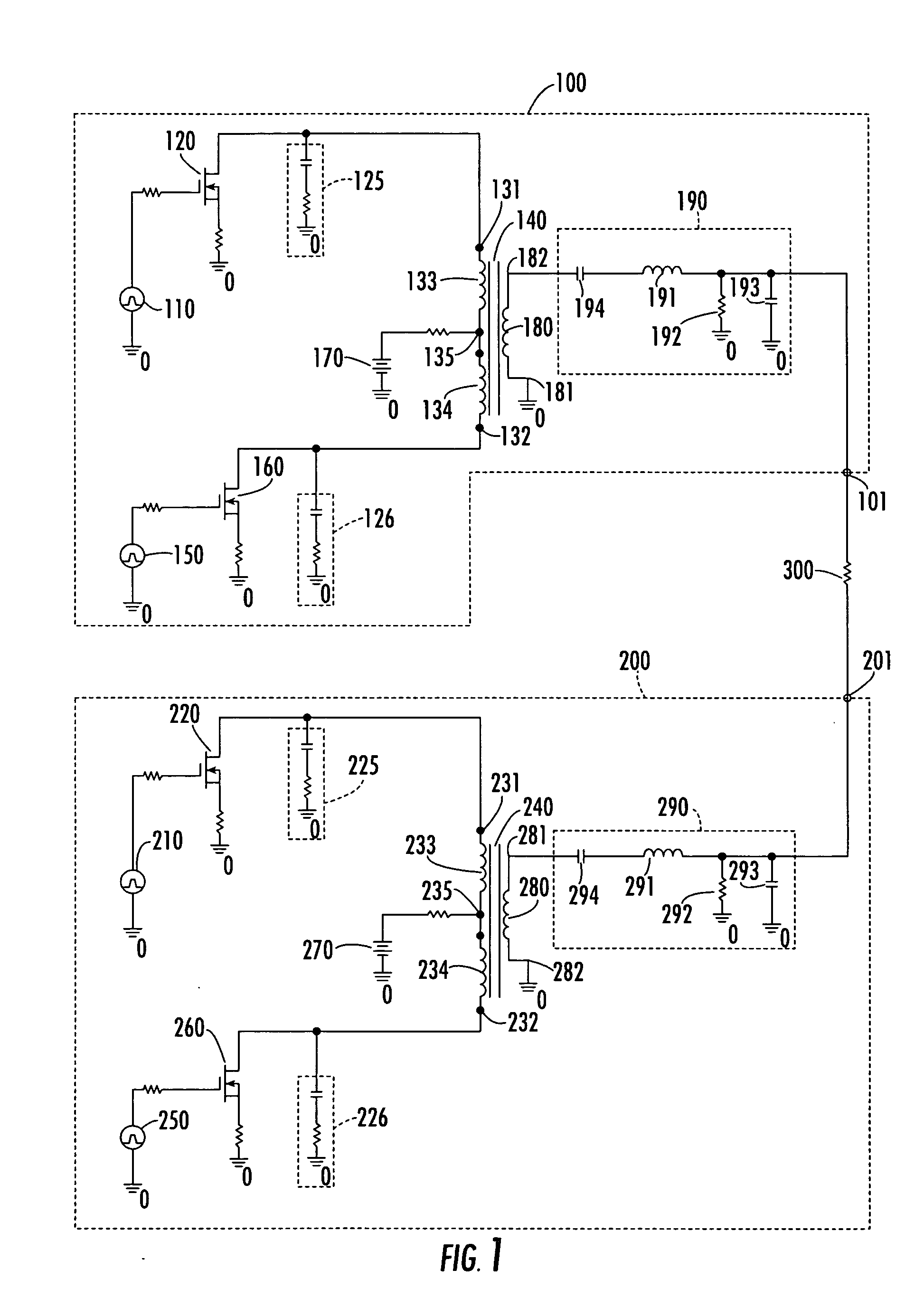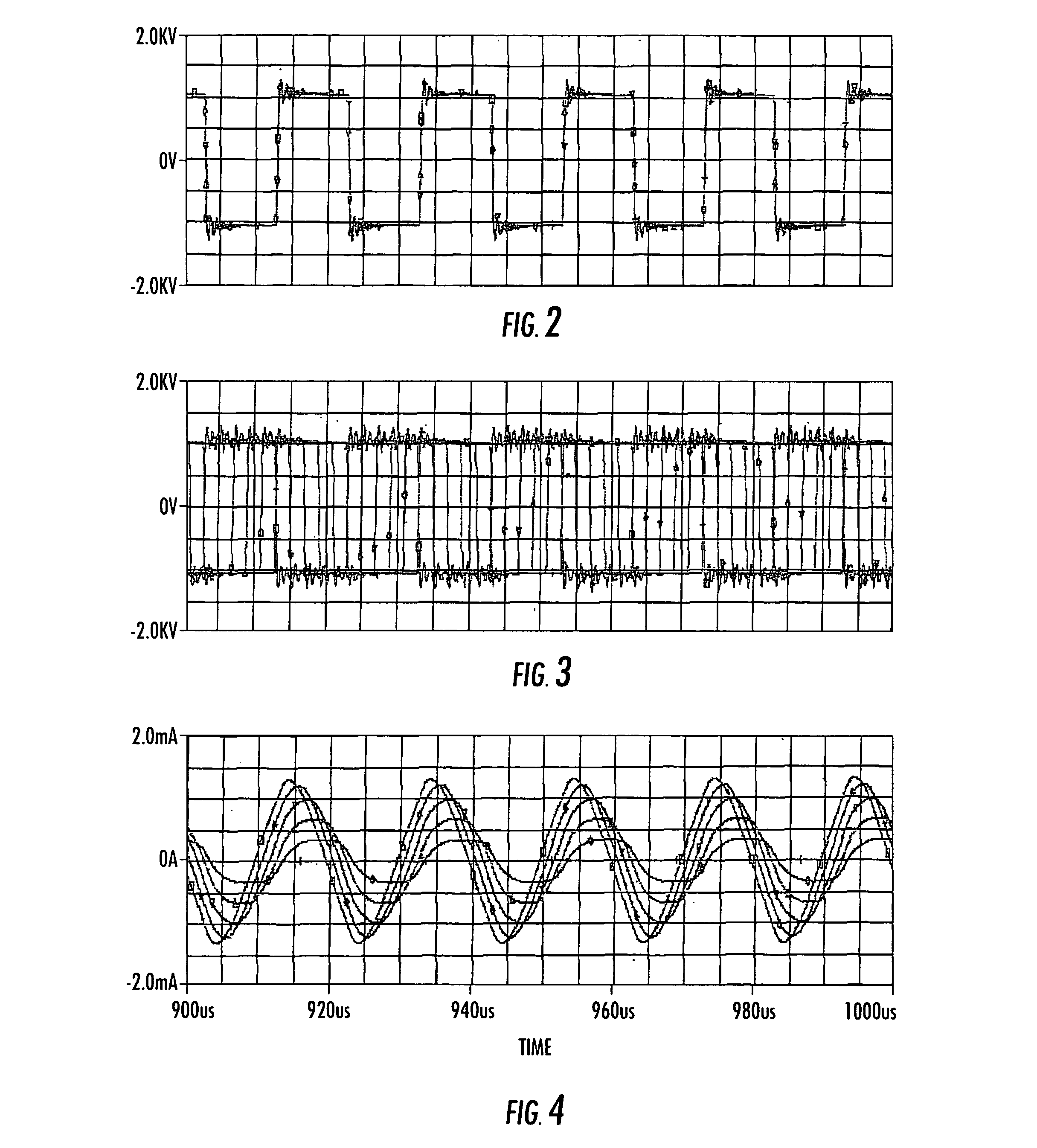Phase shift modulation-based control of amplitude of AC voltage output produced by double-ended DC-AC converter circuitry for powering high voltage load such as cold cathode fluorescent lamp
a technology of phase shift modulation and control of amplitude, applied in the direction of dc-ac conversion without reversal, process and machine control, instruments, etc., can solve the problems of inconvenient operation, high cost, and undesirable effects
- Summary
- Abstract
- Description
- Claims
- Application Information
AI Technical Summary
Benefits of technology
Problems solved by technology
Method used
Image
Examples
Embodiment Construction
[0026] Before detailing the double-ended, phase modulation-based DC-AC converter architecture of the present invention, it should be observed that the invention resides primarily in a prescribed novel arrangement of conventional controlled power supply circuits and components. Consequently, the configurations of such circuits and components and the manner in which they may be interfaced with a driven load, such as a cold cathode fluorescent lamp have, for the most part, been shown in the drawings by readily understandable schematic block diagrams, and associated waveform diagrams, which show only those specific aspects that are pertinent to the present invention, so as not to obscure the disclosure with details which will be readily apparent to those skilled in the art having the benefit of the description herein. Thus, the schematic block diagrams are primarily intended to show the major components of various embodiments of the invention in convenient functional groupings, whereby ...
PUM
 Login to View More
Login to View More Abstract
Description
Claims
Application Information
 Login to View More
Login to View More - R&D
- Intellectual Property
- Life Sciences
- Materials
- Tech Scout
- Unparalleled Data Quality
- Higher Quality Content
- 60% Fewer Hallucinations
Browse by: Latest US Patents, China's latest patents, Technical Efficacy Thesaurus, Application Domain, Technology Topic, Popular Technical Reports.
© 2025 PatSnap. All rights reserved.Legal|Privacy policy|Modern Slavery Act Transparency Statement|Sitemap|About US| Contact US: help@patsnap.com



